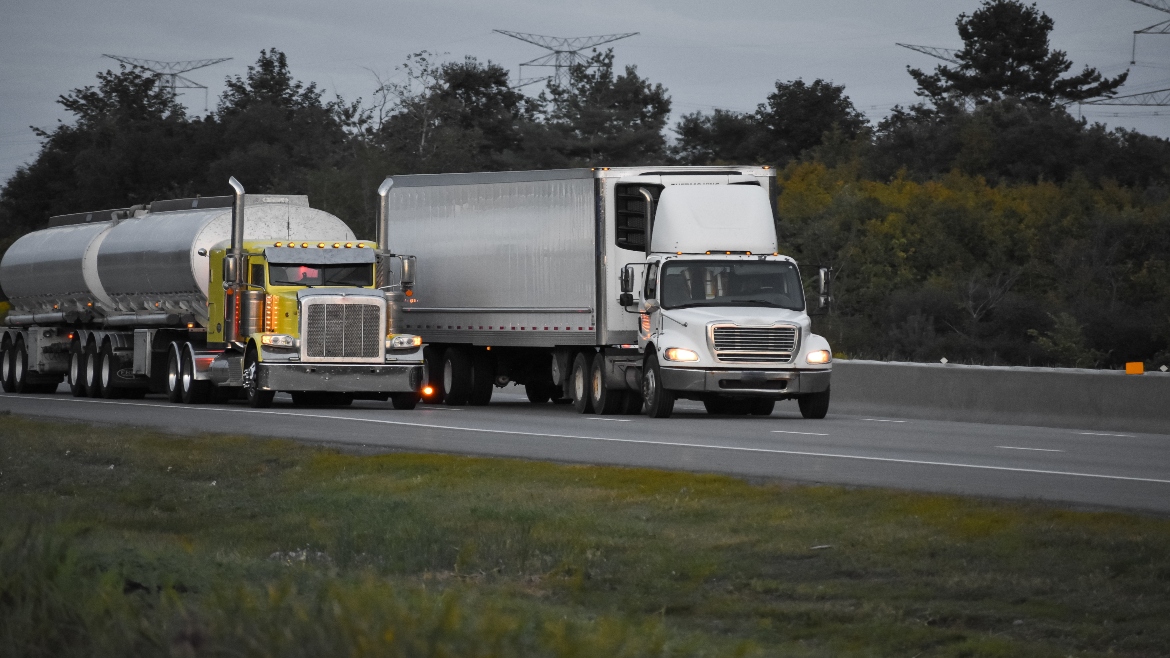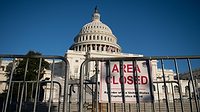On Bastille Day 2016, an Islamic State-inspired terrorist in a 19-ton Renault truck ran over and killed 86 pedestrians and injured 450 others during a rampage along the seaside promenade in Nice, France. In December 2016, an Islamic State-linked terrorist drove a 48-ton Scania semi-truck over pedestrians at a Berlin Christmas tree market, killing 12 and injuring over 50. At home, one need only to recall the 1995 Oklahoma City truck bombing (168 killed, 800 injured) as well as the 1993 World Trade Center van bombing (six killed, over 1,000 injured) to appreciate the risks appending to explosive-laden vehicles.
The use of vehicles as a modus operandi of terrorism is evidenced by a finding that between 1970-2019 “[t]here were 257 recorded terror attacks that involved some type of vehicle.” Moreover, “[b]y 2016 vehicle ramming attacks were the most lethal form of attack comprising just over half of all terrorism-related deaths in that year.”
Against this backdrop, mobilized-inclined extremists or fringe actors already using trucks to block roadways and bridges as a grievance tool may launch vehicle-borne attacks — explosive-laden or otherwise — on a convoy’s target. Such a specter is worth considering, particularly so as recent American, Canadian, and truck convoys abroad included extremist and fringe elements spun into a frenzy by social media, talking heads, and politicians alike.
This article addresses the use of truck convoys by fringe and extremist movements while highlighting the risks if one or more such operatives undertakes a truck ramming attack or detonates a truck bomb against a government or other target. Depending on the circumstances, such an incident could have significant, deadly, and symbolic effects.
Canada’s Freedom Convoy
By late January 2022, a convoy, calling itself the Freedom Convoy, consisting of trucks and other vehicles (and accompanying thousands of protesters), reached Ottawa, the Canadian capital. For several weeks, running past mid-February, the protesters converged into the so-called red zone in that city, including a presence at Parliament Hill. According to one estimate, about 3,000 trucks aligned with the Freedom Convoy reached the city. In the main, the Canadian Freedom Convoy sought to oppose Liberal Prime Minister Justin Trudeau and the country’s Covid-19 restrictions, such as a January 2022 vaccine mandate for Canadian (and other) truckers. Those behind the Freedom Convoy included frustrated truck drivers, political opponents of Trudeau, anti-vaxxers/maskers, radicals calling for a civil war, a smattering of QAnon adherents, neo-Nazis, fringe elements, and other extremists. The Freedom Convoy’s funding campaigns used venues such as GoFundMe and GiveSendGo.
The Freedom Convoy purposely chose the Canadian capital for maximum impact, disruption, and visibility. Convoy participants in trucks and cars joined each other along selected provinces before reaching Ottawa. While traveling, the truckers clogged transportation networks with their rigs. Among other disruptions, the convoy made the Ambassador Bridge — a major transportation and trade network connecting Canada to the United States — impassable. As such, international trade and supply chains between these North American partners were undermined. The convoy interfered with other transportation networks, preventing individuals from getting to/from work, disrupted firms from conducting business, and impacted the quality of life of citizens due to noise caused by the rigs.
At the onset, the Canadian federal government dismissed the Freedom Convoy as a small, ineffectual fringe of protesters. This perception and accompanying complacency eventually evolved once the truckers descended upon Ottawa and used their vehicles as means to cause mayhem. In light of these disruptions, on February 11, 2022, Ontario Premier Doug Ford declared a state of emergency in the province. Three days later, Prime Minister Trudeau invoked the Emergencies Act, which granted the government temporary powers like prohibiting public assembly that disrupts the peace. These responses did not quickly remedy the difficulties engendered by the Freedom Convoy. Law enforcement responses to the protesters were of mixed success, although a more aggressive posture ultimately took form. Ottawa’s Chief of Police resigned due to criticism his department received following initial weakness in getting the Freedom Convoy under control.
As polarizing and destabilizing the convoy was for Canada (with negative economic repercussions in the United States), some Americans supported the Freedom Convoy. Select Republican politicians and various television personalities openly encouraged the movement. Yet, this support was not only observed among some elite. Other Americans, fringe and otherwise, took note of the Freedom Convoy’s partial successes, and contrived a plan to form their own trucker convoy with some interlaced objectives.
America’s People’s Convoy
During the third week of February 2022, an American-based trucker convoy, initially advocating the suspension of pandemic restrictions, set out from California to converge on the nation’s capital. Named the People’s Convoy, this ensemble of trucks and other vehicles reworked the blueprint of the Freedom Convoy, with a markedly U.S.-grievance-based tinge and objects of their antipathy. The People’s Convoy, which occasionally comprised hundreds of trucks and other vehicles, temporarily clogged roads as the convoy made its way to the U.S. capital. Likewise, several small-scale splinter trucker convoys sought to link up or rival the People’s Convoy.
Among other protesters, the People’s Convoy included a malignant melting pot of far-right extremists and conspiracy theorists such as the Proud Boys, Boogaloo Bois, Three Percenters, white supremacists, neo-Nazis, QAnon supporters, Covid-19 vaccine conspiracy theorists, anti-abortionists, and others characterized in the “salad bar” extremism mix. At times, the People’s Convoy undertook broad fundraising efforts, including various organizations, individuals, and PACs. For example, the Great American Patriot Project PAC recruited and provided funding to the People’s Convoy. In total, the People’s Convoy amassed approximately $1.8 million through a fundraising platform, the American Foundation for Civil Liberties and Freedom.
Concurrently, the People’s Convoy garnered a massive social media presence and following where truckers, far-right extremists/conspiracy theorists and other social media goers connected with and spurred on the convoy. Such social media interactions and coordination included: the posting of convoy routes, where protestors could eat/sleep/refuel for free, how others could donate to the cause, and propaganda (e.g., election denialism, inaccurate characterizations of Covid-19 and vaccines, and anti-masking diatribes). The dissemination of such misinformation and disinformation during the convoy was designed to influence the masses into being susceptible to figment realities. In doing so, these spurious ideas garnered support for their agendas and contemporaneously — albeit occasionally — advocated violence.
Aside from the convoy’s online presence, its leaders cited manifold issues of concern:
- Covid-19 mandates
- Protection of constitutional civil liberties
- Overturning the 2020 Presidential election
- Opposing left-wing-oriented issues
The People’s Convoy received fewer media coverage than otherwise due to interest in the Russian invasion of Ukraine. Some convoy supporters lamented how the Russian attack undermined their publicity efforts.
Entirely unrelated to the People’s Convoy, which was enroute to Washington D.C., the U.S. government ended many Covid-19 restrictions. As such, COVID-19-related misgivings should have abated as they were addressed by government easing. Undeterred — and underscoring the pandemic was not the sole instigator of their concerns — the convoy continued to Washington, D.C. Unsurprisingly, some shifts in the convoy’s focus and grievances were then exhibited.
With the January 6th insurrection in mind, along with the disorder manifested during the Canadian truck convoy and with the benefit of lead time, the U.S. government crafted defensive measures to minimize commotion in Washington, D.C. In particular, the People’s Convoy raised significant concerns should hundreds of rigs descend on the nation’s capital simultaneously, especially if they launch an attack. Thanks to law enforcement countermeasures and National Guard mobilization, the convoy’s ability to interrupt or threaten prominent landmarks were significantly stymied.
Ultimately, the People’s Convoy established a base outside of the nation’s capital, at Hagerstown Speedway in Maryland. Soon, the convoy’s presence at the speedway was mired by divergent interests, infighting, and displays of provocative extremist rhetoric, which dismayed some truckers. The grouping of misfits mentioned above made the core of this assemblage of causes somewhat disjointed. Nevertheless, on several occasions, the convoy went from Hagerstown Speedway to Washington, D.C. The convoy primarily sought to clog transportation networks and exhibit diverse messages on their rigs. Several Republican politicians, including Sen. Ron Johnson, Rep. Matt Gaetz, and Rep. Marjorie Taylor Green, visited the speedway and spoke with the protestors. Not to be outdone, Republican Sen. Ted Cruz rode one of the rigs while the People’s Convoy was in Washington, D.C.
To a greater extent than the Freedom Convoy, the People’s Convoy appealed and attracted fringe and extremist constituencies. As the People’s Convoy transversed across the United States, some persons came out to support the convoy. In big and small cities alike, supporters of the People’s Convoy were photographed standing on highway overpasses, highway shoulders, and on roads adjacent to the highway, waving and/or wearing Confederate and Gadsden flags as well as “Let’s Go, Brandon,” “Trump 2024,” and “Trump won,” regalia. Also displayed among convoy supporters were signs with QAnon messaging, Three Percenter and Proud Boys tattoos, sovereign citizen symbology, and graphic anti-abortionist imagery, among others. The social media posts circulating among People’s Convoy adherents ranged from individuals calling for civil war, reinstatement of Donald Trump as president, using trucks and weapons against their perceived opponents, militia propaganda, and sharing of far-right conspiracy theories.
As the People’s Convoy reached Washington, D.C., it splintered from within. From the onset, the People’s Convoy leadership cadre was not unified. This was marked by conflicting messages and, ultimately, trouble coordinating the convoy effectively. This same difficulty ultimately carried over to the convoy’s fundraising efforts. Ultimately, nearly $2 million was unaccounted for, which coincided with the fundraising coordinator’s arrest for fraud. Other shortcomings included the formation of several splinter convoys which sought to join up with the main convoy. The U.S. Freedom Convoy, which also departed from California, made it only to Nevada. Other periphery convoys ran into difficulties along the way and never reached Washington, D.C.
In retrospect, the People’s Convoy was only able to slow traffic in and around Washington, D.C., instead of gridlocking the city. While few arrests were made, several citations were issued to the protesters. As time passed and the People’s Convoy fizzled out, some supporters remained loyal to the mission. A temporary setback to the convoy came when Hagerstown Speedway evicted the People’s Convoy.
Although the People’s Convoy did not achieve its goals, iterations of the movement continued in some forms. After the People’s Convoy was evicted from the Hagerstown Speedway, the convoy headed back to California to protest outside of liberal lawmakers’ homes. The impact of this convoy was mixed, although they raised the profile of issues and movements, fringe and extremist among them. More importantly, the convoy demonstrated that its efforts could not be ignored given the number of vehicles (some potentially imposing) and supporters this activity elicited.
The People’s Convoy remained active and returned to Washington, D.C., in July 2022. In that instance, the People’s Convoy involved protestors parking their vehicles on the National Mall with their flags and signage held high. However, this time around, law enforcement was less willing to tolerate disruptions than before. Swift actions by police led to the arrest of a leader of the People’s Convoy, Dave “Santa” Riddell, for blocking a D.C. roadway on July 4th and 5th. After Riddell’s arrest, it was reported he was a Proud Boy member and the leader of the far-right 1776 Restoration Movement.
Looking Ahead
The 2022 Canadian and American truck convoys were not a new phenomenon in North America, although the interspersing of fringe, extremist, and violent ideologies articulated among selected convoy members was noteworthy. These trucker convoys were launched in response to pandemic restrictions coupled with diverse political leanings (often on the periphery) and objectives, some violent in nature.
Subsequent to the Freedom Convoy, provocateurs and others in several countries replicated previous trucker convoys and co-opted them. France experienced its own freedom convoy, which blocked traffic along some routes. This convoy was met by security forces outfitted with tear gas. Likewise, Belgium experienced the World Freedom Convoy, which saw some 40,000 individuals join a chatroom dedicated to the convoy protesters. Australia and New Zealand, no strangers to far-right and fringe communities, experienced trucker convoys similar to that of the Canadian Freedom Convoy. Down under, truckers descended near parliamentary buildings and partially gridlocked Canberra and Wellington. In contrast, the United Kingdom’s trucker convoy somewhat mirrored the American People’s Convoy, where a significant trucker convoy threat presented itself, but due to rapid law enforcement and other governmental interventions, disruptions were finite.
With the precedent of truck convoys internationally, it is incumbent to foreshadow what is to come when this modality is adopted by protesters seeking to conduct violence. During the impending U.S. elections in 2022 and 2024, trucker convoys could be utilized again, especially by fringe members or extremist groups. More disturbingly, a convoy could include employing vehicles — explosive-laden or otherwise — in terrorist attacks against buildings, infrastructure, and/or mass gatherings. Other possible trucker convoys could focus on the U.S. southern border. The People’s Convoy coterie included radicals who discussed addressing the migrant crisis at the border with a truck convoy.
In light of possible vehicle ramming (or bombing) activities perpetrated by a radicalized aligned trucker, a number of mitigation and protective measures can be adopted. For instance, the U.S. Department of Homeland Security outlined some countermeasures against attacks involving vehicles:
- Define the perimeter and areas that require access control
- Restrict all vehicular traffic through controlled and secure ‘pedestrian-only’ areas
- Establish clear standoff zones
- Evaluate the need for vehicle barriers, considering passive barriers (fixed bollards, fences, jersey barriers, etc.) and/or active barriers (retractable bollards, rising wedges, etc.)
- If appropriate, pre-position heavy vehicles to serve as physical barriers around the perimeter of densely populated locations
- Monitor all vehicles approaching an entrance or gathering of people for signs of threatening or suspicious behavior ((e.g., unexpected truck traffic, unusual high speed, vehicles riding particularly low).
The National Counterterrorism Center’s concerns about vehicle-borne terrorism are addressed in a first-responder toolbox highlighting defensive measures:
- Vehicle barriers can be passive (static), active (operable), re-deployable, and improvised. The appropriate use, type, and location of vehicle barriers may require a site assessment, traffic engineering study, and site survey. When deciding vehicle barrier types (bollards, trees, street art), consider intended use, routine maintenance needs and costs, accessibility and safety
- Traffic Calming Measures may reduce the speed of a vehicle, decreasing vehicle energy and impact.
Indeed, a political event, governmental crisis, or a public health measure could contribute to fomenting a new trucker convoy. In sequence, extremists and conspiracy purveyors among them could hasten the launching of a vehicle-borne attack. The Nice and Berlin truck ramming incidents, like the Oklahoma City and 1993 World Trade Center bombings, certainly evidence that this terror modality justifies attention.
Given today’s corrosive and polarized atmosphere, the probability of a truck-induced attack against a parliament or state legislature is all the more likely. The consequences of such incidents would deeply undermine faith in government and serve as a sign for accelerationists to join in the carnage. Simultaneously, foreign adversaries could exploit the ensuing chaos to our detriment. Lest we avoid such situations by acknowledging these perils beforehand and take appropriate measures against them now.




